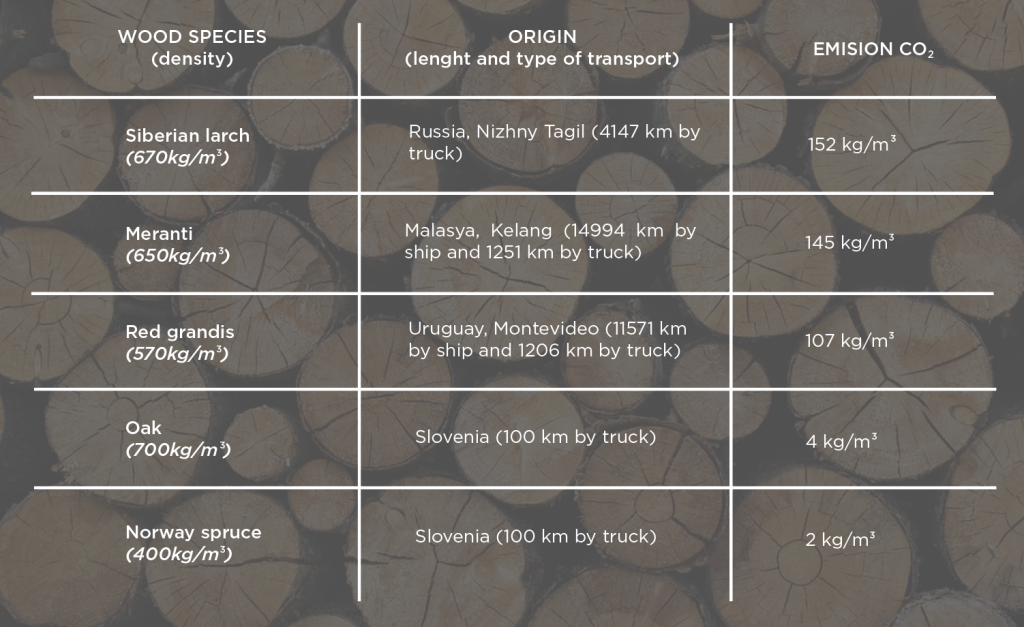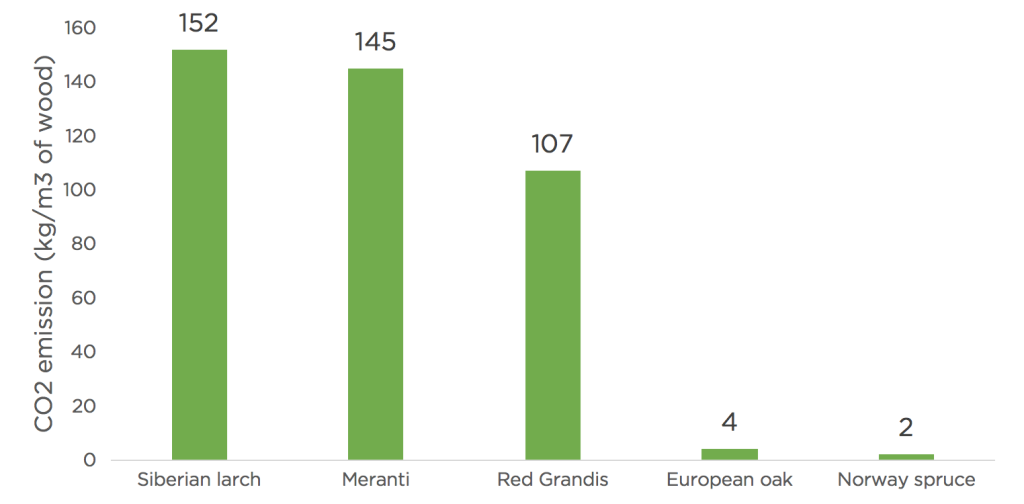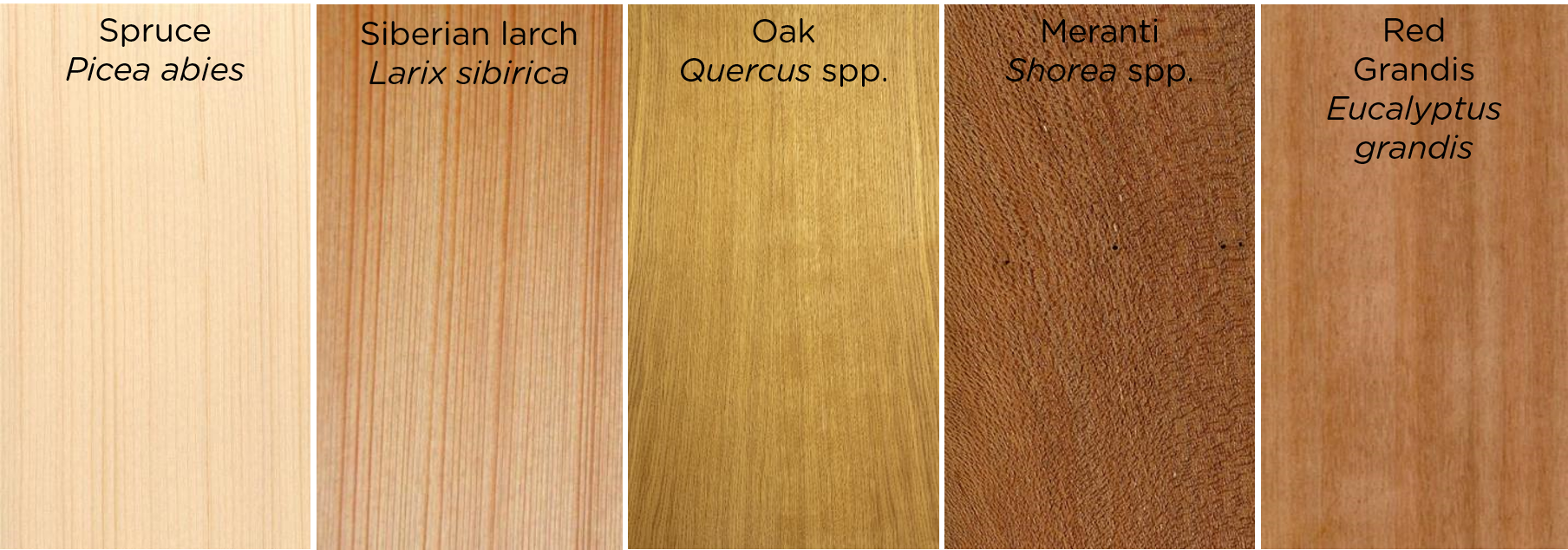Spruce (Picea abies) and oak (Quercus spp.) are from Slovenia and predominantly from surrounding forests, whereas Siberian larch (Larix sibirica) comes from the Russian town of Nizny Tagil in Siberia, meranti (Shorea spp.) from Malaysia and Red grandis (Eucalyptus grandis) from Uruguay. We will highlight the problem of transport and consequently, the carbon footprint caused by the transport of a certain wood species. We have already written about the pros and cons of different wood species in a separate article. The table shows the data of the length and type of transport and the density of the mentioned wood species. The length of the transport was calculated by means of accessible data of shipping freight and the length of transport using regular road infrastructure. Above mentioned information were in combination with carbon emission data caused by certain type of transport the basis for the calculation of the CO2 emissions released during the transport of 1m3 of a certain timber species to the production of windows in Žiri, Slovenia.

Data of the density and origin of wood, length and type of transport and CO2 emissions caused by the transport of the most commonly used wood species in the windows
Based on these calculations we can clearly point out the importance of wood origin and the point and importance of use of domestic wood species. It needs to be added that potentially questionable cutting down tropical forests and quality of plantation grown wood is another problematic topic which was not considered here.

CO2 emissions which are caused by transportation of 1m3 of certain wood species from the location of origin to the production of windows in Žiri, Slovenia


